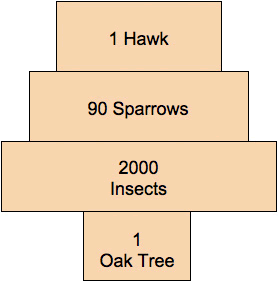One way to show the trophic levels in an ecosystem is with an ecological pyramid. There are three main types of ecological pyramids: pyramid of energy, pyramid of numbers and pyramid of biomass.
![]() Watch the following video to learn about these three types of pyramids.
Watch the following video to learn about these three types of pyramids.
Pyramids of energy show the relative amount of energy available at each trophic level of a food chain or web. On average about 10 percent of the energy available within one trophic level is transferred to the next level. The other 90% is given off as heat during metabolic processes. Look at the pyramid below. It shows a pyramid of energy. Notice that the energy is expressed in Kcal or kilocalories.
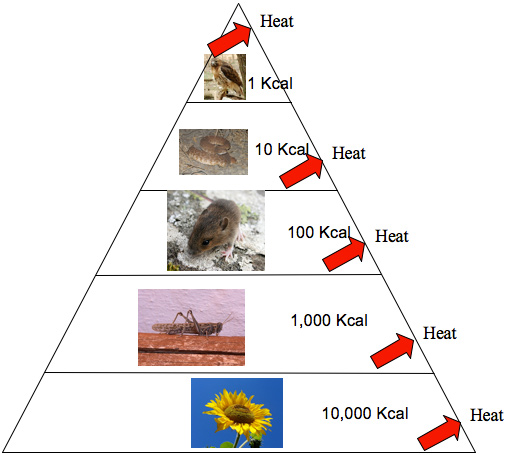
A pyramid of biomass shows the relative amount of organic matter, or living tissue, available at each trophic level in an ecosystem. Biomass is usually measured in grams or kilograms of organic matter per unit area.
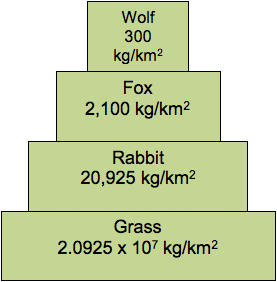
Not all ecological pyramids are uniform in structure. For example look at the pyramid below. Notice the bottom level is smallest. This represents a pyramid of biomass from the ocean ecosystem. Phytoplankton is the producer. They are so small and weigh so little there is very little biomass.
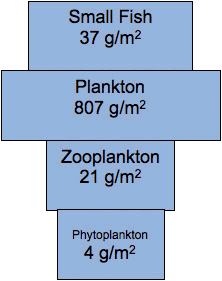
A pyramid of numbers shows the relative number of individual organisms at each trophic level in an ecosystem.
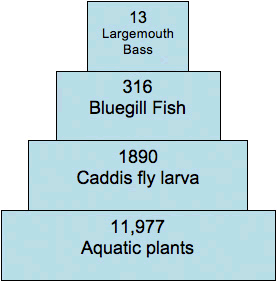
Again not all pyramids of numbers have the largest amount at the bottom. Look at this pyramid of numbers shown below. It shows a pyramid of numbers in a forest.
